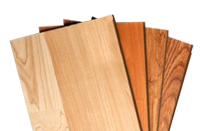How is Mango Wood Furniture so affordable?
An introduction to mango wood
Mango wood is grown in South East Asia, Mexico, Brazil and parts of Australia – a commodity that spans three continents. It is in essence a by-product of the mango fruit industry. Mango trees grow incredibly fast, taking only around 10-15 years to reach full productivity and a height of up to 100 feet. When they get older and taller than this they are trickier to harvest and can become less productive (fruit wise). The fact that the trees can be harvested for mango wood at this point gives mango farmers a double bubble and helps keep the price of the wood down, as they are already making money from the mango fruit. Previously mango trees were felled when they became unproductive and the wood would be burned, which was not only bad for the environment but didn’t yield any income for the farmer. This ensures that the price of the wood is relatively low, firstly because it is essentially a by-product of an already sustainable business (the fruit production) and secondly because of the quick maturation of the trees themselves. Once one mango tree is felled, another is planted and will be mature within 15 years. Compare this to oak trees which average around 75 years to reach full maturity and you have an incredibly cost-effective material.
Inside this first paragraph is another clue to why mango wood furniture can be so affordable. The fact that mango trees can be grown on three continents means that there is competition and competition combined with proliferation brings down the costs of the raw material (the wood itself) needed to manufacture mango wood furniture.
Moving on to the manufacturing of the furniture
As we are interested in the affordability of mango wood furniture, rather than simply mango wood as a raw material, we need to dig a little deeper. Of course, the fact that the raw material is relatively affordable is a major part of the puzzle, but there is more to it than that. Mango wood is classified as a hardwood, but unlike some of its hardwood relatives like oak it is comparatively soft. This makes it easier to work when producing pieces of furniture and blunts less tools. This speeds up production time and offers a great flexibility as to the kinds of products that can be made in record time. As we know time at any stage of the production line is money and the fact that not only are mango trees quick to mature, but the nature of the material makes for reduced manufacturing times is a perfect storm of cost-effectiveness.
Mango wood, by being softer and more malleable also lends itself to the local production of artisanal furniture in the countries where the trees are harvested. As most of these countries have lower wages than western parts of the world, this helps keep the cost of the furniture down while also providing a real boost to the economies of several developing nations. In addition to this, of course, we get to benefit from the incredible craftsmanship and centuries of skill and knowledge that goes into crafting these unique pieces. If the manufacturing process for such pieces was carried out over here, the prices would be exorbitant.
A touch of history and snobbery
You may be familiar with the story of the depletion of cod and haddock stocks in British waters over the past century. The reason for this is because consumers are simply used to seeing these names on menus in fish and chip shops across the UK. There are, as it happens, plenty of other white meat fish species swimming in British seas that would make for perfect alternatives, but they are just not as popular at market or in the restaurant. A little bit of favouritism, the fact we are creatures of habit, maybe a dash of snobbery and history itself combine to keep cod and haddock at the top of the menu. The same could be said for oak and mahogany. At least certainly when looking to the past. Thankfully now, people are becoming more open to sustainable options. This has opened the door to a whole world of new and exciting options when it comes to living room furniture, dining room tables, coffee tables and bedroom furniture made from exotic, but sustainable wood like North Indian rosewood and especially mango wood.
So when you are considering your next piece of furniture, you should certainly put mango wood at the top of your list of requirements. Not only will you get far more for your money, you will be purchasing something that looks fabulous, is easy to maintain, durable, flexible in terms of staining and painting projects and incredibly sustainable and environmentally sound.


